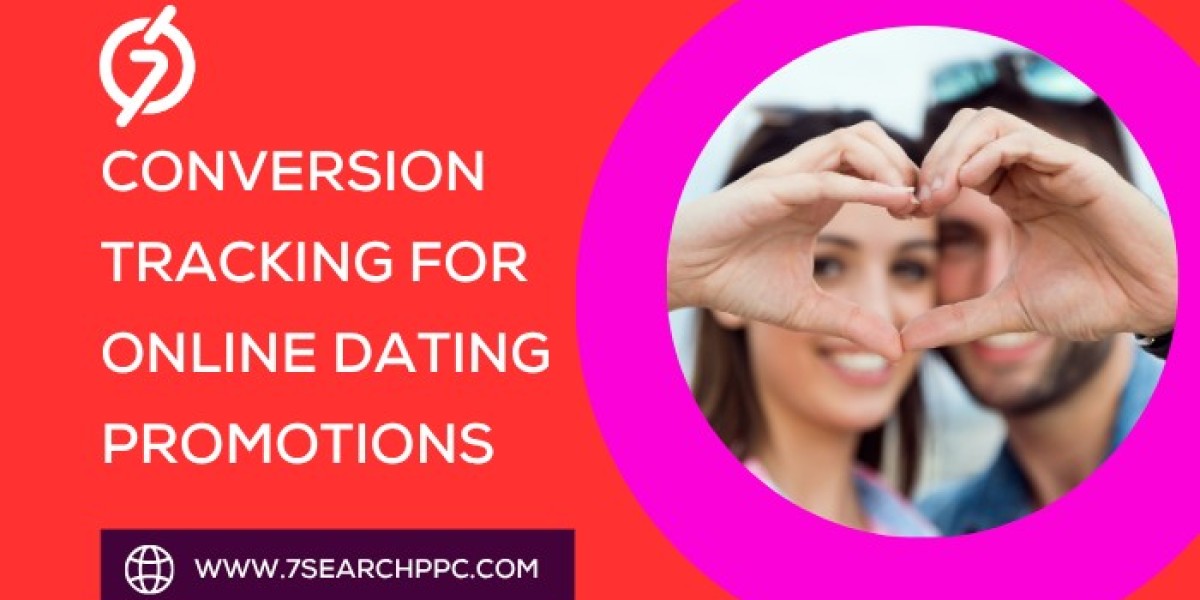If you’re running ads to grow your dating site or app, you already know how unpredictable conversions can be. One campaign brings in a flood of sign-ups, while another drains your budget with zero results. The missing piece often isn’t creativity or traffic volume—it’s tracking.
Conversion tracking is the quiet engine that powers every successful Online Dating Promotion. It tells you what works, what doesn’t, and where your advertising dollars are going. Without it, optimizing campaigns becomes a guessing game.
In this article, we’ll look at how conversion tracking reshapes online dating campaigns, helps advertisers uncover performance gaps, and makes it easier to promote dating sites more profitably.
The Real Challenge in Dating Ad Campaigns
Online dating is one of the most competitive advertising verticals today. Thousands of platforms are fighting for attention on search engines, social media, and programmatic ad networks.
Advertisers often face one central challenge: understanding which ad actions actually lead to sign-ups or matches. You might have strong creatives, catchy headlines, or even high click-through rates—but without conversion tracking, you can’t see the full story.
Most dating advertisers struggle with two big pain points:
- Wasted Ad Spend: Paying for traffic that doesn’t convert.
- Unclear ROI: Not knowing which keywords, networks, or creatives drive the best results.
If these sound familiar, you’re not alone. Many advertisers enter the dating niche full of excitement, only to realize that the real challenge isn’t generating clicks—it’s measuring meaningful actions.
Why Tracking Matters More in the Dating Vertical
Unlike ecommerce or SaaS campaigns, dating promotions often rely on softer conversions like profile sign-ups, app installs, or message sends. These aren’t always immediate purchases, but they still define success.
When you track conversions correctly, you can:
- Identify the ad sources that bring in real users instead of bots or fake leads.
- Understand which creative angles attract genuine intent (such as “Find someone serious” vs. “Chat casually tonight”).
- Optimize your bids for high-quality users rather than empty clicks.
In short, tracking transforms raw ad data into actionable insights. And in dating promotions, insight equals profit.
A Quick Market Insight
According to Statista, the global online dating market is expected to cross $10 billion by 2028, with advertisers investing heavily in mobile-first campaigns. Yet, almost 40% of dating brands fail to set up conversion tracking properly, which means they’re making ad decisions blindfolded.
That’s like running a race without knowing where the finish line is.
Conversion tracking doesn’t just improve visibility—it builds predictability. Once you start seeing patterns, you can forecast performance, test smarter, and scale faster.
The Most Common Tracking Mistakes Advertisers Make
Let’s look at what often goes wrong when promoting dating offers:
Tracking Only Clicks, Not Conversions
Many advertisers stop at CTR (Click Through Rate). It looks impressive, but it doesn’t tell you who actually converted.
Using Wrong Attribution Windows
Dating decisions take time. Some users click an ad, browse, then return days later to sign up. Short attribution windows miss those delayed conversions.
No Postback Integration with Networks
Without linking conversions back to your ad network, optimization becomes impossible. Your campaigns keep bidding on low-quality users.
Ignoring Multi-Device Behavior
Users might see your ad on mobile but sign up later on desktop. If you don’t track cross-device conversions, your results will always look lower than they are.
Understanding these gaps helps you see why smarter tracking tools make a difference.
Mini Insight: The Smarter Way to Track Dating Conversions
Conversion tracking should be more than just pasting a pixel. It’s about mapping the user journey from the first impression to the final sign-up.
Start by defining what a “conversion” means for your dating offer. Is it:
- A completed profile?
- A verified email address?
- A paid subscription upgrade?
Each goal needs its own tracking setup. For example:
- Pixel Tracking for on-site conversions like registrations.
- Postback URLs for mobile app installs.
- Event Tracking for in-app actions such as sending a message or liking a profile.
When you combine these methods, you’ll see not just how many people clicked—but how many stayed and engaged.
How Conversion Data Improves Campaign Decisions
Tracking data helps advertisers do three key things better:
Refine Targeting
You can identify which demographics, devices, or geos deliver better engagement. Maybe your dating offer performs better in Tier-1 countries or among 25–35-year-olds.
Optimize Ad Spend
By seeing which traffic sources generate real sign-ups, you can cut underperforming placements and double down on profitable ones.
Shape Creative Strategy
Tracking lets you test which messages or visuals work best—romantic themes, humor, curiosity, or exclusivity.
When data guides creative and targeting together, ROI grows naturally.
For an in-depth look, check out this detailed guide on Online Dating Promotion.
Real-World Example: From Guessing to Scaling
Imagine two advertisers promoting the same dating app.
- Advertiser A launches broad campaigns with no tracking.
- Advertiser B installs conversion tracking and sets up events for registrations and message sends.
After two weeks, both spend $500. Advertiser A sees 5,000 clicks but no clear conversions. Advertiser B identifies that most paying users come from Android devices in the UK, between 7 PM and 11 PM.
Guess who scales profitably next month?
Tracking turns campaigns from random testing into deliberate scaling.
Soft Solution Hint: Smarter Tracking with the Right Network
You don’t have to build a complex system from scratch. Reliable ad networks already include integrated tracking tools that make the process easier.
A strong Dating Ad Network like 7SearchPPC, for example, allows advertisers to view conversions in real-time and optimize bids automatically.
Here’s how a quality network supports better results:
- Built-in conversion tracking for different ad formats.
- Transparent reporting dashboards.
- Integration options for postbacks and third-party trackers.
- Smart bidding tools for audience segmentation.
The result? Better visibility, higher engagement, and improved ROI—all with less manual guesswork.
Setting Up Conversion Tracking: Step-by-Step Basics
If you’re new to tracking, here’s a simple roadmap to follow:
Install the Tracking Code
Add the conversion pixel to your landing page’s “Thank You” or “Registration Complete” page.
Define Your Conversion Goals
List actions you want to measure—sign-ups, logins, or purchases.
Connect Your Ad Network
Use postback URLs to report conversions back to your ad platform automatically.
Test the Setup
Use test clicks to make sure conversions fire correctly.
Analyze and Adjust
Once you start seeing data, compare your campaign metrics weekly. Identify patterns and adjust your bids or creatives accordingly.
It’s not about setting and forgetting—it’s about continuous learning.
Tracking Metrics That Actually Matter
Some advertisers drown in too much data. Focus on metrics that reflect real user intent.
- CTR (Click-Through Rate): Measures engagement, but not conversion.
- CVR (Conversion Rate): The real indicator of ad effectiveness.
- CPA (Cost per Acquisition): Shows how efficiently you acquire users.
- LTV (Lifetime Value): Helps you plan sustainable ad budgets.
Together, these metrics reveal your campaign’s full health—what’s working now, and what deserves more attention.
Going Beyond Clicks: Behavioral Tracking
Today’s dating users don’t just click—they explore, test, and compare. Behavioral tracking captures how they interact after signing up:
- Do they complete their profiles?
- Do they send messages or swipe?
- Do they upgrade to premium plans?
These micro-actions tell you whether your traffic is valuable or just window shopping.
Advertisers who track behaviors can segment audiences more effectively and target returning users with retargeting campaigns that feel personal and relevant.
Tracking Meets Retargeting: Closing the Loop
Conversion tracking feeds your retargeting strategy. When you know who clicked but didn’t convert, you can bring them back with better offers or creative adjustments.
For instance, if a user abandoned the sign-up process halfway, a retargeting ad reminding them of local matches can re-engage their interest.
With the right tracking setup, every click counts—even the ones that didn’t convert the first time.
Bottom Line
In the dating ad world, performance doesn’t depend on who shouts the loudest—it depends on who measures smartest.
Conversion tracking helps advertisers turn chaos into clarity. You stop guessing, start optimizing, and promote dating sites with precision.
If you’re serious about scaling your next Online Dating Promotion, start by integrating proper tracking tools and working with a network that values transparency and data-driven optimization.
Ready to take the next step?
You can create an ad campaign today and experience the difference that accurate tracking makes.






